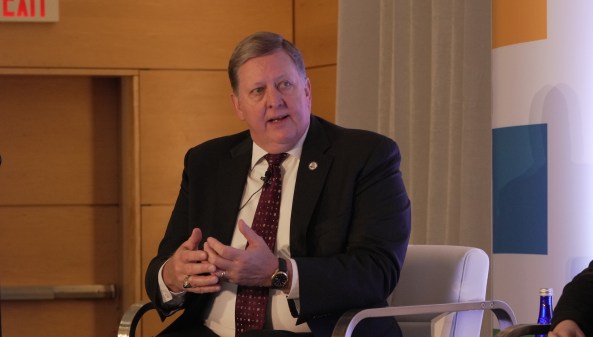Beleaguered patent office telework program gets high marks in independent report
The U.S. Patent and Trademark Office’s now-controversial telework program received a mostly positive appraisal in a highly anticipated independent review requested by the agency.
Overall, the National Academy of Public Administration report recommended the agency continue to offer its telework programs while it works to strengthen the tools it uses and its management practices.
“The Panel determined that the telework program has provided important benefits to the USPTO, including saving money, enhancing employee quality of life, potentially increasing recruitment and retention, and ensuring on-going work during emergencies,” according to the report.
After reports of time fraud within the office’s award-winning telework program last summer, the office has pressed to restore the program’s reputation. Patent office officials, testifying at hearings last year and early this year, have touted the National Academy of Public Administration investigation as one effort to root out weaknesses in the program.
In the report, authors said they found “no differences between the teleworkers and non-teleworkers in their performance and conduct.” It also found that its teleworking policies were in line with those in the public and private sector — though it noted that most organizations view teleworking as a privilege, while the patent office has telework eligibly criteria built into its union agreement.
Despite the mostly positive findings, authors recommended that the office focus on improving the quality of the patents it issues.
“Patent quality needs further examination. The current system stresses quantitative production over quality,” according to the report. Authors recommended the office continue to work on its patent quality initiative that launched earlier this year.
The academy brought together a panel of five fellows to develop the report. They spent nine months reaching out to patent office staffers and senior officials. They also surveyed patent examiner supervisors on whether recent training and policy improvements have been beneficial.
The National Academy of Public Administration told FedScoop in December that it planned to release the report in May, however the report wasn’t published until Friday.
“[T]his report was (1) a large undertaking and (2) the Academy’s top priority was to ensure that the review was as thorough as possible, and that the findings and recommendations were as comprehensive as possible,” said Joe Mitchell, NAPA’s director of project development, in an email. “As a result, the work took a little longer than initially anticipated, but we believe that the final report is well-researched, comprehensive, and insightful.”
The report’s more than 30 recommendations include:
- Continue to review the procedures with supervisors to ensure that they are using available timekeeping and attendance tools.
- Offer refresher training on time and attendance management guidance.
- Establish separate probationary/conditional periods for beginning full-time teleworkers.
- Require teleworkers to re-sign their teleworking agreements every two years to acknowledge they accept current policies and procedures.
The Commerce Department’s Office of Inspector General, which acts as a watchdog for the patent office, said it was “pleased that USPTO reached out to the academy to assess its process for time and attendance, and we are currently reviewing the report.”
At the same time, the patent office is applauding the findings of the report.
“We are pleased that the report clearly affirms the strong business value and efficient operation of the agency’s telework programs, confirms the soundness of the agency’s time and attendance controls in place, and offers a number of recommendations by which the telework programs (although described by the report to already be an example of best practices in the public and private sector) could potentially continue to improve even further,” USPTO Chief Communications Officer Todd Elmer said in a statement.



